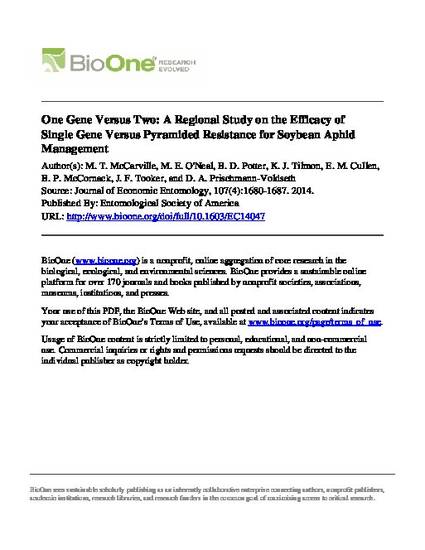
The soybean aphid (Aphis glycines Matsumura) is a threat to soybean production in the Midwestern United States. Varieties containing the Rag1 soybean aphid resistance gene have been released with limited success in reducing aphid populations. Furthermore, virulent biotypes occur within North America and challenge the durability of single-gene resistance. Pyramiding resistance genes has the potential to improve aphid population suppression and increase resistance gene durability. Our goal was to determine if a pyramid could provide improved aphid population suppression across a wide range of environments.Weconducted a small-plot field experiment across seven states and three years. We compared soybean near-isolines for the Rag1 or Rag2 gene, and a pyramid line containing both genes for their ability to decrease aphid pressure and protect yield compared with a susceptible line. These lines were evaluated both with and without a neonicitinoid seed treatment. All aphid-resistant lines significantly decreased aphid pressure at all locations but one. The pyramid line experienced lower aphid pressure than both single-gene lines at eight of 23 location-years. Soybean aphids significantly reduced soybean yield for the susceptible line by 14% and for both single-gene lines by 5%; however, no significant yield decrease was observed for the pyramid line. The neonicitinoid seed treatment reduced plant exposure to aphids across all soybean lines, but did not provide significant yield protection for any of the lines. These results demonstrate that pyramiding resistance genes can provide sufficient and consistent yield protection from soybean aphid in North America.
Available at: http://works.bepress.com/matthew_oneal/97/

This article is from Journal of Economic Entomology 107 (2014): 1680, doi:10.1603/EC14047.